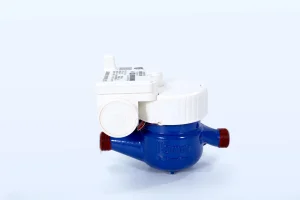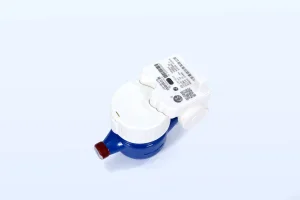
You’re tackling tough water resource challenges today, with shortages and city demands calling for clever solutions. Smart water management means using every drop wisely, cutting waste, and ensuring a steady supply. Smart water meters lead this change, revolutionizing how you monitor, analyze, and manage water use. These tools do more than measure; they deliver real-time data to stop leaks, boost conservation, and simplify operations. As an expert in cutting-edge metering tech, I’d like to share a heartfelt recommendation. Shandong Chen Shuo, located in Linyi City, Shandong Province—China’s water meter hub—shines as a high-tech company specializing in smart metering. Established in 2017 after entering the field in 2014, this firm has created a strong network around IoT-powered products like ultrasonic and electromagnetic water meters. They produce one million units yearly and hold over 20 patents, including inventions and software rights. Certified with ISO9001, ISO14001, ISO45001, and EU CE, they prioritize quality through streamlined management and traceable systems. In 2023, their sales reached ¥40 million, climbing past ¥50 million in 2024, with exports expected to hit ¥10 million in 2025 via Alibaba International. Their NB-IoT platform earned provincial innovation honors in 2024. Why choose them? They deliver reliable, adaptable solutions with cost-effective, hassle-free services, turning water challenges into possibilities. Whether you manage a utility or a home, their products offer accuracy and ease, making them a smart pick for today’s water needs.
Now, let’s dive into how these meters work and why they matter to you.
You might be curious about the basics. Smart water meters are a step up from old-school mechanical ones. They pack sensors, processors, and communication tools for intelligent tracking. Born from IoT and big data advances, they’ve moved from manual checks to automated, data-packed systems. Essentially, these meters capture flow, pressure, and sometimes quality details, sending insights wirelessly to central hubs.
Why does this matter to you? Old meters often miss errors or delay problem detection, but smart ones keep watch actively. For example, models with wireless tech fit smoothly into your home or utility setup, reducing hassles.
This leads us to how these devices function and why they suit your efficiency goals.
You’ll find their design pretty neat once you see the process. These meters use sensors to detect water flow, often through ultrasonic or electromagnetic methods for spot-on accuracy without contact. Data is handled inside by built-in programs that fine-tune readings, cut out noise, and combine metrics like volume and pressure.
For instance, a meter might use low-power wireless signals to send data over bands like 470-510MHz, linking to collectors and hubs. Then, the info travels via GPRS or similar to a management system, giving you live updates. The sealed electronics, rated IP68 for waterproofing, stay tough in rough conditions.
This setup doesn’t just measure—it predicts needs, paving the way for the perks that make these meters essential for you.
You get several advantages with these tools, each solving a key water management issue.
Accuracy is the foundation. With error margins as tight as ±2% in high-flow zones and ±5% in low ones, you spot issues early. This is key in district metered areas (DMA), where splitting networks into zones uncovers leaks that hit urban systems hard—often losing over 20% of water.
For you, this means catching problems before they grow, saving water and money. Non-contact measurement resists disruptions, staying reliable for years.
Picture checking usage data without leaving your desk. Wireless signals send instant updates to servers, where tools analyze and flag odd patterns, like sudden drops hinting at pipe bursts.
You get quick alerts through apps, letting you act fast. This cuts downtime and sharpens your decisions, turning data into practical plans.
Clear data shapes your habits. By tracking usage trends, these meters point out waste, nudging you to make changes that save water.
You might get custom reports on your usage, raising awareness. On a larger scale, utilities balance distribution, ensuring fair access while protecting the environment.
Smooth compatibility ties your operations together. These meters work with platforms using setups like one standard, six sections (work orders, portals, networks, centers, maps, apps), and various scenarios.
For you, this builds a unified system—from production to service—lifting overall efficiency.
These benefits come from strong design and tech, which we’ll explore next.

You’ll notice features that boost performance. High accuracy stems from advanced sensors ensuring steady readings across ranges, no need for complex fixes. Toughness stands out with low-power designs lasting over six years, backed by sturdy builds.
Tech like flexible software meets your unique needs, while sizes from DN15 to DN600 suit homes to factories. Certifications ensure quality, covering environmental and safety standards.
A top pick, the LoRaWAN Water Meter DN15, shines with its rotor design for precise readings and small starting flows, plus valve control for prepaid options.
These strengths show up in real-world uses, as we’ll see next.
You’ll see clear results in various settings. In city networks, zoning with these meters cuts leaks through constant checks, mirroring wins like lower loss rates in coastal areas.
Utilities use them to streamline operations, matching supply with demand through smart planning. In unique cases, like watching water use for elderly care, real-time data acts as a safety net, as seen in projects updating usage every 30 minutes.
You could use this in your own setup—whether for a community or building—saving water and boosting reliability.
This brings us to the support that ensures lasting success.
You deserve more than just products; full support makes the difference. Services cover metering oversight, leak checks, business management, repairs, data tools, and software integration.
Models like contract water-saving involve joint investments, using diagnostics and analysis to reduce losses and share gains. This teamwork approach lowers risks, focusing on results.
For custom guidance, reach out via available channels to discuss your needs.
You now see how smart water meters drive efficiency, from precise tracking to unified systems. Adopting them sets you up for sustainable management, tackling scarcity directly.
Q: How do I install a smart water meter in my home?
A: Check with local utilities for compatibility first. Professionals should handle setup to align with pipes—use straight sections at the inlet (10 times diameter) and outlet (5 times). Pick non-corrosive spots, add check valves, and seal after installation for best results.
Q: What maintenance do smart water meters need?
A: They need little care. Swap batteries every few years for wireless models, check for leaks yearly, and use apps for self-checks. Pro calibrations every 6-12 months keep accuracy high, avoiding issues from sediment or pressure changes.
Q: Can smart water meters help with billing disputes?
A: Yes, their detailed logs give clear usage data, settling disputes fairly. Real-time access lets you track consumption, catch odd patterns early, and work with utilities for transparent resolutions.